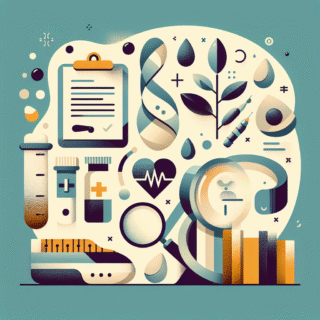
More Heart Disease, Stroke and Diabetes Articles
Is Beans Good for Diabetes?

Including beans in a balanced eating plan can be a smart strategy for people managing blood sugar, and the phrase good diabetes describes the goal of pairing taste with stable glucose control. Beans deliver fiber, plant protein and micronutrients while generally producing a slower rise in blood glucose than refined carbohydrates. This article reviews how beans fit into a diabetes-friendly diet, which types tend to be best, and practical ways to cook and portion them for steady energy.
Good-for-diabetes bean choices: why beans help
Beans are complex carbohydrate foods with a low to moderate glycemic impact. The soluble and insoluble fiber they contain slows digestion and helps blunt post-meal glucose spikes. In addition, the protein and resistant starch in beans promote satiety, which can help with weight management — an important part of diabetes care. When people ask are beans good for diabetes, the short answer is: yes, especially when beans replace higher-glycemic foods like white rice, bread or sugary snacks.
Nutrition basics: what beans provide
One cup of cooked beans (varies by type) typically offers 10–15 grams of protein, 12–18 grams of fiber and a mix of vitamins and minerals such as folate, magnesium and potassium. These nutrients support cardiovascular health and metabolic function. Because people with diabetes are at elevated risk for heart disease, pairing bean-rich meals with other heart-healthy choices is doubly beneficial; for more on heart and diabetes interactions, read about protecting heart health with diabetes.
Which beans are best?
- Kidney beans and black beans: High in fiber and commonly used in stews and salads.
- Chickpeas (garbanzo beans): Versatile — great in salads, hummus or roasted for snacks.
- Pinto beans: Traditional in many cuisines, pair well with whole grains for balanced meals.
- Lentils and split peas (technically legumes but often grouped with beans): Cook quickly and are high in soluble fiber, which is especially helpful for blood sugar control.
When people ask which beans are good for diabetes, these options are frequently recommended because of their fiber-protein balance and predictable carbohydrate content.
Practical tips: how to use beans to support blood sugar
Portion control and meal composition matter. Beans can be a main protein source or mixed with lean proteins, vegetables and healthy fats. Swap a half-cup of cooked beans for a portion of refined starch at a meal to reduce glycemic load. If you’re wondering is beans good for diabetes when canned, choose low-sodium canned beans or rinse them well to remove excess salt.
Meal ideas
- Salad topped with black beans, mixed greens, avocado and a vinaigrette.
- Vegetable and lentil soup with a side of whole-grain toast.
- Chickpea and vegetable curry served over cauliflower rice for a lower-carb option.
Blood sugar monitoring and individual response
Everyone responds differently. Some people see only modest improvements in post-meal glucose, while others notice larger benefits. If you use a glucose meter or continuous glucose monitor, test your response to bean-based meals compared with other carbohydrate sources. This real-time feedback helps tailor choices to your own metabolism. For general dietary guidance and managing meals with diabetes, authoritative resources such as the CDC provide practical recommendations and meal planning tools: CDC guidance on healthy eating with diabetes.
Common questions people ask
It’s common to hear queries like are beans good for diabetes in mixed dishes, or whether canned versus dried makes a difference. Dried beans cooked at home allow you to control added salt and fat. Canned beans are convenient and still healthy when rinsed. If you are on medications that affect potassium levels (for example, some blood pressure medicines), check with your clinician because beans can be a significant source of potassium.
- Use beans to replace higher-glycemic carbs rather than adding them on top of an already carb-heavy meal.
- Combine beans with vegetables, healthy fats and lean protein to smooth blood sugar responses.
- Favor whole, minimally processed bean preparations and watch portion size.
Takeaways
- Beans are generally a diabetes-friendly carbohydrate, offering fiber and protein that support steady blood sugar.
- Kidney, black, pinto beans, chickpeas and lentils are among the best choices for regular use.
- Swap beans for refined carbs and monitor your individual glucose response to fine-tune portions.
FAQ: Are beans safe for people with diabetes?
Yes — for most people, beans are a safe, nutritious choice that can improve blood sugar control when used in place of refined carbohydrates. Discuss any medication interactions or kidney concerns with your clinician.
FAQ: How much should I eat at a time?
A common starting portion is 1/2 to 1 cup of cooked beans per meal, paired with vegetables and a source of healthy fat or lean protein. Adjust based on your glucose readings and satiety.
Other Articles You May Find of Interest...
- Where to Find Your Heart: Understanding Its Position in the Body
- Reasons Behind Your Shaky Feelings and Weakness
- Saving Lives: Automatic vs. Semi-Automatic Defibrillators
- What Does an Abnormal EKG Mean and What Causes It?
- How Blood Sugar Stability Shapes Your Mood, Energy, and Focus
- Decoding Your ECG Results: What Abnormal Readings Mean and Their Causes
- How to Recognize the Warning Signs of Exsanguination














